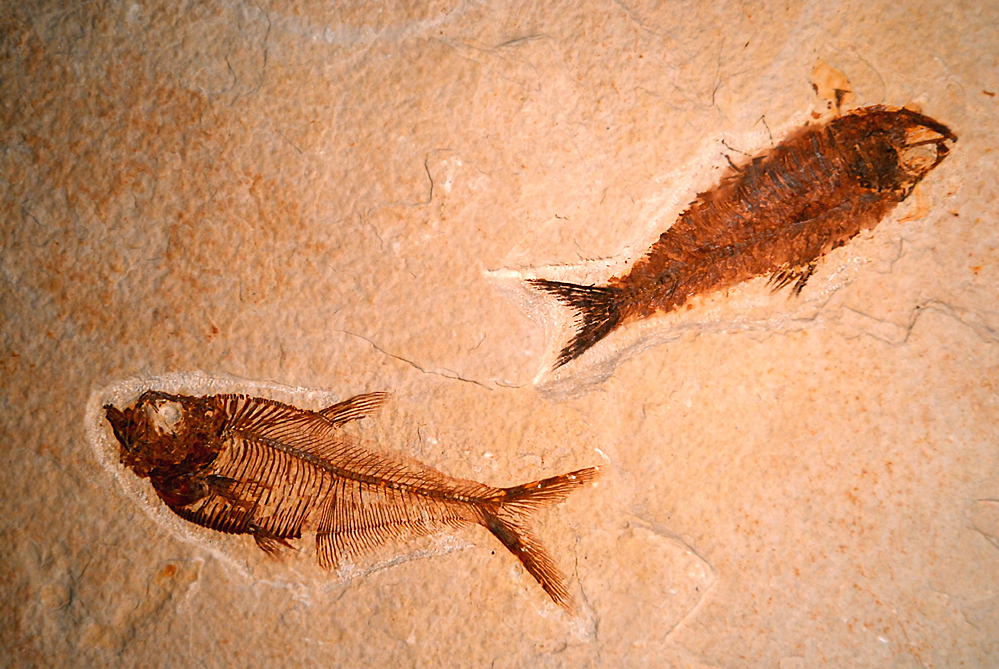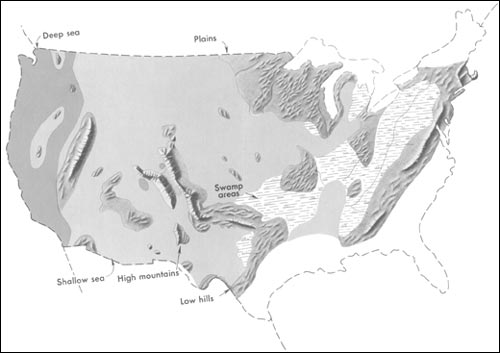|
Pseudophlegethontia
''Pseudophlegethontia'' is an extinct genus of aïstopod stegocephalians. It is the only member of the family Pseudophlegethontiidae. The only species is the type species ''P. turnbullorum'', named in 2003. Fossils of ''Pseudophlegethontia'' have been found from the Mazon Creek fossil beds in Grundy County, Illinois, a '' conservation lagerstätte'' well known for the exceptional preservation of middle Pennsylvanian taxa. ''Pseudophlegethontia'' has been considered to be morphologically intermediate between derived phlegethontiids and more basal "ophiderpetontids" such as ''Ophiderpeton''. It possesses basal characters such as a relatively short body, "k shaped" ribs, and distinctive skull roof bones while also possessing several more derived features such as a pointed snout, thin gastralia, and a lack of dorsal osteoderms. It is usually, but not unanimously, placed as the sister taxon In phylogenetics, a sister group or sister taxon, also called an adelphotaxon, comprises th ... [...More Info...] [...Related Items...] OR: [Wikipedia] [Google] [Baidu] |
Aistopods
Aistopoda (Greek for " avingnot-visible feet") is an order of highly specialised snake-like stegocephalians known from the Carboniferous and Early Permian of Europe and North America, ranging from tiny forms only , to nearly in length. They first appear in the fossil record in the Mississippian period and continue through to the Early Permian. The skull is small but very specialised, with large orbits, and large fenestrae. The primitive form ''Ophiderpeton'' has a pattern of dermal bones in the skull similar in respects to the temnospondyls. But in the advanced genus ''Phlegethontia'' the skull is very light and open, reduced to a series of struts supporting the braincase against the lower jaw, just as in snakes, and it is possible that the aistopods filled the same ecological niches in the Paleozoic that snakes do today. They had an extremely elongated body, with up to 230 vertebrae. The vertebrae were holospondylous, having only a single ossification per segment. They lac ... [...More Info...] [...Related Items...] OR: [Wikipedia] [Google] [Baidu] |
Late Carboniferous
Late may refer to: * LATE, an acronym which could stand for: ** Limbic-predominant age-related TDP-43 encephalopathy, a proposed form of dementia ** Local-authority trading enterprise, a New Zealand business law ** Local average treatment effect, a concept in econometrics Music * ''Late'' (album), a 2000 album by The 77s * Late!, a pseudonym used by Dave Grohl on his '' Pocketwatch'' album * Late (rapper), an underground rapper from Wolverhampton * "Late" (song), a song by Blue Angel * "Late", a song by Kanye West from '' Late Registration'' Other * Late (Tonga), an uninhabited volcanic island southwest of Vavau in the kingdom of Tonga * "Late" (''The Handmaid's Tale''), a television episode * LaTe, Oy Laivateollisuus Ab, a defunct shipbuilding company * Late may refer to a person who is Dead See also * * * '' Lates'', a genus of fish in the lates perch family * Later (other) * Tardiness * Tardiness (scheduling) {{disambig ... [...More Info...] [...Related Items...] OR: [Wikipedia] [Google] [Baidu] |
Synapomorphy
In phylogenetics, an apomorphy (or derived trait) is a novel character or character state that has evolved from its ancestral form (or plesiomorphy). A synapomorphy is an apomorphy shared by two or more taxa and is therefore hypothesized to have evolved in their most recent common ancestor. ) In cladistics, synapomorphy implies homology. Examples of apomorphy are the presence of erect gait, fur, the evolution of three middle ear bones, and mammary glands in mammals but not in other vertebrate animals such as amphibians or reptiles, which have retained their ancestral traits of a sprawling gait and lack of fur. Thus, these derived traits are also synapomorphies of mammals in general as they are not shared by other vertebrate animals. Etymology The word —coined by German entomologist Willi Hennig—is derived from the Ancient Greek words (''sún''), meaning "with, together"; (''apó''), meaning "away from"; and (''morphḗ''), meaning "shape, form". Clade ana ... [...More Info...] [...Related Items...] OR: [Wikipedia] [Google] [Baidu] |
Sister Taxon
In phylogenetics, a sister group or sister taxon, also called an adelphotaxon, comprises the closest relative(s) of another given unit in an evolutionary tree. Definition The expression is most easily illustrated by a cladogram: Taxon A and taxon B are sister groups to each other. Taxa A and B, together with any other extant or extinct descendants of their most recent common ancestor (MRCA), form a monophyletic group, the clade AB. Clade AB and taxon C are also sister groups. Taxa A, B, and C, together with all other descendants of their MRCA form the clade ABC. The whole clade ABC is itself a subtree of a larger tree which offers yet more sister group relationships, both among the leaves and among larger, more deeply rooted clades. The tree structure shown connects through its root to the rest of the universal tree of life. In cladistic standards, taxa A, B, and C may represent specimens, species, genera, or any other taxonomic units. If A and B are at the same t ... [...More Info...] [...Related Items...] OR: [Wikipedia] [Google] [Baidu] |
Osteoderm
Osteoderms are bony deposits forming scales, plates, or other structures based in the dermis. Osteoderms are found in many groups of extant and extinct reptiles and amphibians, including lizards, crocodilians, frogs, temnospondyls (extinct amphibians), various groups of dinosaurs (most notably ankylosaurs and stegosaurians), phytosaurs, aetosaurs, placodonts, and hupehsuchians (marine reptiles with possible ichthyosaur affinities). Osteoderms are uncommon in mammals, although they have occurred in many xenarthrans ( armadillos and the extinct glyptodonts and mylodontid and scelidotheriid ground sloths). The heavy, bony osteoderms have evolved independently in many different lineages. The armadillo osteoderm is believed to develop in subcutaneous dermal tissues. These varied structures should be thought of as anatomical analogues, not homologues, and do not necessarily indicate monophyly. The structures are however derived from scutes, common to all classes ... [...More Info...] [...Related Items...] OR: [Wikipedia] [Google] [Baidu] |
Gastralia
Gastralia (singular gastralium) are dermal bones found in the ventral body wall of modern crocodilians and tuatara, and many prehistoric tetrapods. They are found between the sternum and pelvis, and do not articulate with the vertebrae. In these reptiles, gastralia provide support for the abdomen and attachment sites for abdominal muscles. The possession of gastralia may be ancestral for Tetrapoda and were possibly derived from the ventral scales found in animals like rhipidistians, labyrinthodonts, and '' Acanthostega'', and may be related to ventral elements of turtle plastrons. Similar, but not homologous cartilagenous elements, are found in the ventral body walls of lizards and anurans. These structures have been referred to as inscriptional ribs, based on their alleged association with the inscriptiones tendinae (the tendons that form the six pack in humans). However, the terminology for these gastral-like structures remains confused. Both types, along with sternal ri ... [...More Info...] [...Related Items...] OR: [Wikipedia] [Google] [Baidu] |
Ophiderpeton
''Ophiderpeton'' (from el, ὄφῐς , 'snake' and el, ἑρπετόν 'creeper') is an extinct genus of aistopod tetrapodomorphs from the early Carboniferous to the early Permian. Remains of this genus are widespread and were found in Ohio, United States, Ireland, and the Czech Republic (Central Europe). Like other aistopods, ''Ophiderpeton'' was snake-like, without any trace of limbs. Its body was about long, with 230 vertebrae. The skull measured , and large, forward-facing eyes, suggesting a hunting lifestyle. It probably lived in burrows, feeding on insects, worms, millipedes, and snails. Many species are classified in the genus, and similar animals, ''Phlegethontia'' and '' Sillerpeton'', are known. An earlier genus, '' Lethiscus'', is known from the Carboniferous and Early Permian The Permian ( ) is a geologic period and stratigraphic system which spans 47 million years from the end of the Carboniferous Period million years ago (Mya), to the beginning of th ... [...More Info...] [...Related Items...] OR: [Wikipedia] [Google] [Baidu] |
Basal (phylogenetics)
In phylogenetics, basal is the direction of the ''base'' (or root) of a rooted phylogenetic tree or cladogram. The term may be more strictly applied only to nodes adjacent to the root, or more loosely applied to nodes regarded as being close to the root. Note that extant taxa that lie on branches connecting directly to the root are not more closely related to the root than any other extant taxa. While there must always be two or more equally "basal" clades sprouting from the root of every cladogram, those clades may differ widely in taxonomic rank, species diversity, or both. If ''C'' is a basal clade within ''D'' that has the lowest rank of all basal clades within ''D'', ''C'' may be described as ''the'' basal taxon of that rank within ''D''. The concept of a 'key innovation' implies some degree of correlation between evolutionary innovation and diversification. However, such a correlation does not make a given case predicable, so ancestral characters should not be imputed ... [...More Info...] [...Related Items...] OR: [Wikipedia] [Google] [Baidu] |
Phlegethontiidae
Phlegethontiidae is a family of extinct aistopod amphibians including the genera ''Phlegethontia'' and ''Sillerpeton ''Sillerpeton'' is an extinct genus of aïstopod tetrapodomorphs within the family Phlegethontiidae. It contains a single species, ''Sillerpeton permianum'', which is based on braincases and vertebrae from the Early Permian Richards Spur Richar ...''. Carboniferous amphibians Permian amphibians Aistopods {{paleo-amphibian-stub ... [...More Info...] [...Related Items...] OR: [Wikipedia] [Google] [Baidu] |
Lagerstätte
A Lagerstätte (, from ''Lager'' 'storage, lair' '' Stätte'' 'place'; plural ''Lagerstätten'') is a sedimentary deposit that exhibits extraordinary fossils with exceptional preservation—sometimes including preserved soft tissues. These formations may have resulted from carcass burial in an anoxic environment with minimal bacteria, thus delaying the decomposition of both gross and fine biological features until long after a durable impression was created in the surrounding matrix. ''Lagerstätten'' span geological time from the Neoproterozoic era to the present. Worldwide, some of the best examples of near-perfect fossilization are the Cambrian Maotianshan shales and Burgess Shale, the Silurian Waukesha Biota, the Devonian Hunsrück Slates and Gogo Formation, the Carboniferous Mazon Creek, the Jurassic Posidonia Shale and Solnhofen Limestone, the Cretaceous Yixian, Santana, and Agua Nueva formations, the Eocene Green River Formation, the Miocene Foulden Maar and ... [...More Info...] [...Related Items...] OR: [Wikipedia] [Google] [Baidu] |
Pennsylvanian (geology)
The Pennsylvanian ( , also known as Upper Carboniferous or Late Carboniferous) is, in the ICS geologic timescale, the younger of two subperiods (or upper of two subsystems) of the Carboniferous Period. It lasted from roughly . As with most other geochronologic units, the rock beds that define the Pennsylvanian are well identified, but the exact date of the start and end are uncertain by a few hundred thousand years. The Pennsylvanian is named after the U.S. state of Pennsylvania, where the coal-productive beds of this age are widespread. The division between Pennsylvanian and Mississippian comes from North American stratigraphy. In North America, where the early Carboniferous beds are primarily marine limestones, the Pennsylvanian was in the past treated as a full-fledged geologic period between the Mississippian and the Permian. In parts of Europe, the Mississippian and Pennsylvanian are one more-or-less continuous sequence of lowland continental deposits and are grouped ... [...More Info...] [...Related Items...] OR: [Wikipedia] [Google] [Baidu] |

.png)



